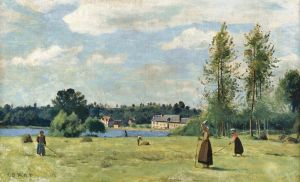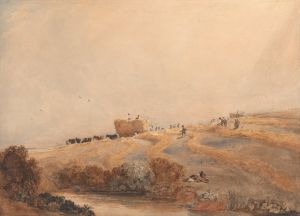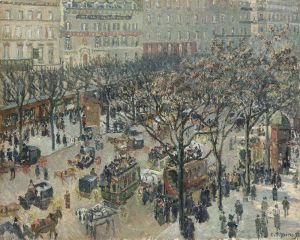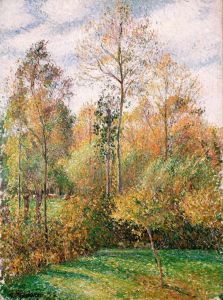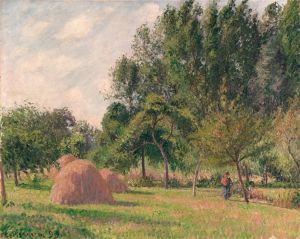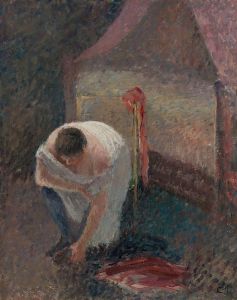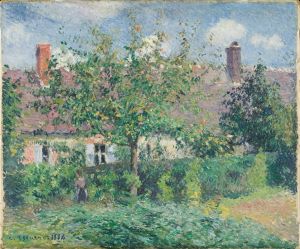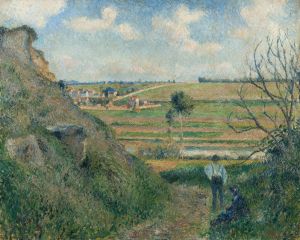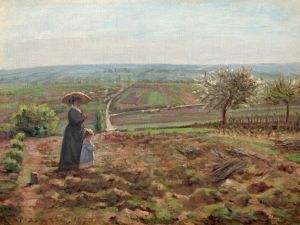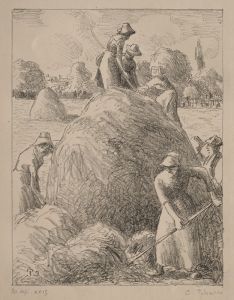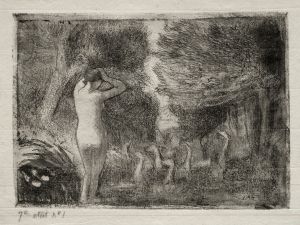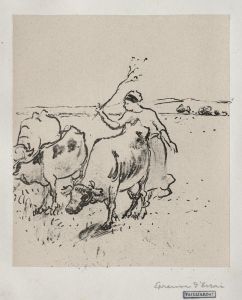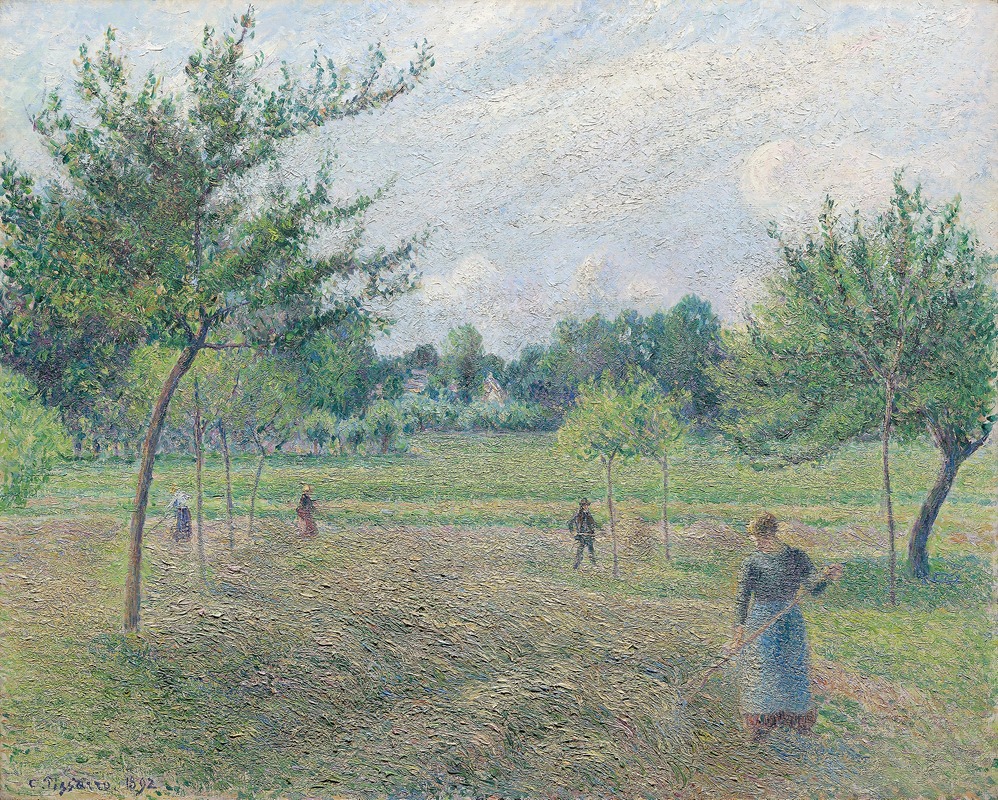
Haymaking at Éragny
A hand-painted replica of Camille Pissarro’s masterpiece Haymaking at Éragny, meticulously crafted by professional artists to capture the true essence of the original. Each piece is created with museum-quality canvas and rare mineral pigments, carefully painted by experienced artists with delicate brushstrokes and rich, layered colors to perfectly recreate the texture of the original artwork. Unlike machine-printed reproductions, this hand-painted version brings the painting to life, infused with the artist’s emotions and skill in every stroke. Whether for personal collection or home decoration, it instantly elevates the artistic atmosphere of any space.
Haymaking at Éragny is an oil painting created in 1901 by the French Impressionist and Neo-Impressionist artist Camille Pissarro. The artwork depicts rural laborers engaged in the process of haymaking in the village of Éragny-sur-Epte, where Pissarro lived during the later years of his life. This painting is a notable example of Pissarro's dedication to portraying scenes of rural life and the working class, a theme that recurred throughout his career.
Pissarro moved to Éragny-sur-Epte in 1884 and remained there until his death in 1903. The village, located in northern France, provided the artist with a wealth of pastoral landscapes and agricultural scenes that he frequently incorporated into his work. "Haymaking at Éragny" reflects Pissarro's interest in capturing the harmony between humans and nature, as well as his commitment to depicting the dignity of labor. The painting showcases his characteristic use of light, color, and brushwork to convey the atmosphere of the countryside.
The composition of the painting features a group of figures working in a field, surrounded by lush greenery and a serene rural backdrop. Pissarro employs a palette of soft, natural tones to evoke the warmth and tranquility of the scene. His brushstrokes are loose and textured, a hallmark of his Impressionist style, yet the painting also demonstrates his later experimentation with Neo-Impressionist techniques, particularly in the use of color and divisionism.
Pissarro was deeply influenced by his political beliefs, which leaned toward anarchism, and his art often reflected his respect for the working class. While "Haymaking at Éragny" does not explicitly convey political messages, it aligns with his broader artistic focus on the lives of ordinary people and their connection to the land.
The painting is part of a series of works Pissarro created during his time in Éragny, many of which depict similar rural themes. These works are celebrated for their ability to capture the essence of rural life in France at the turn of the 20th century. Today, "Haymaking at Éragny" is held in the collection of the Musée d'Orsay in Paris, where it is appreciated as an important example of Pissarro's mature style and his contributions to both Impressionism and Neo-Impressionism.
This artwork continues to be studied and admired for its technical mastery and its representation of Pissarro's enduring interest in the interplay between humanity and nature.





